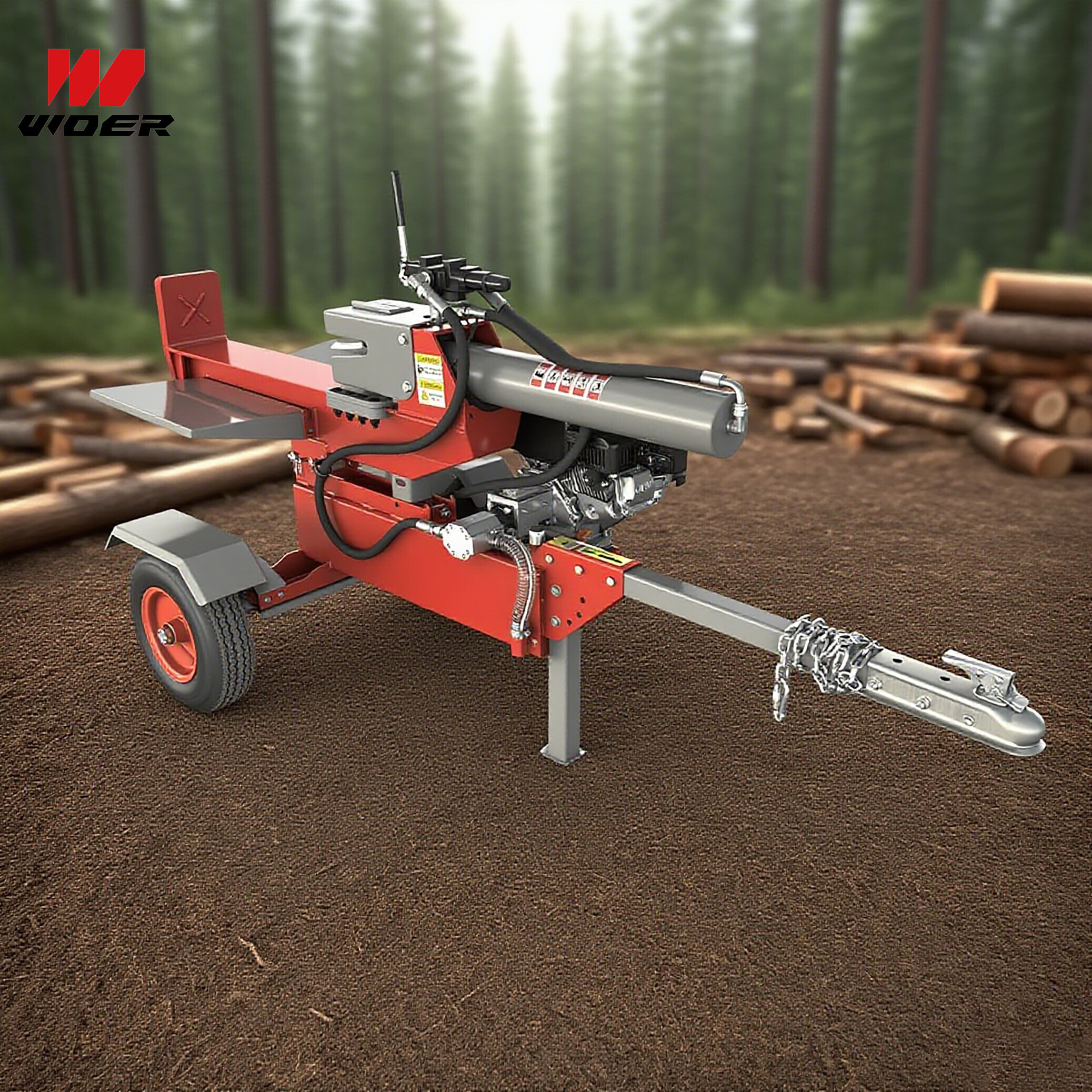Navigation
Contact us
Phone
Message

Looking for an affordablelog splitter in 2025? This practical guide compares hydraulic, electric, kinetic and gasoline log splitters to help operators, technical evaluators and procurement teams choose cost-effective, safe and durable wood log splitter solutions.
What is a log splitter and why choice matters
A log splitter is a machine designed to reduce logs into firewood by applying force to split wood along its grain. Buyers must weigh duty cycle, splitting force (measured in tons), power source and portability. For organizations and contractors, the right log splitter reduces labor, improves safety and delivers predictable throughput.
Key types: hydraulic, electric, kinetic and gasoline
Hydraulic log splitter
Hydraulic log splitter systems use a hydraulic pump and cylinder to produce steady, high splitting force. Typical advantages: 10–30 ton models suitable for heavy hardwood, controllable ram speed, and reliable splitting for industrial or farm use. Consider hydraulic units when consistent cycle time and high tonnage matter. Note: maintenance includes hydraulic fluid checks, seals and pump service.
Electric log splitter
Electric log splitter models use an electric motor to drive the hydraulic pump or a linear actuator. They are quieter, low-maintenance and ideal for residential or light commercial use. Common configurations range from 3 to 7 kW (4–10 HP equivalent) and often come as vertical or horizontal units. For sites with easy access to power, electric options offer low operating cost and zero onsite emissions.
Kinetic log splitter
Kinetic log splitters rely on flywheel energy storage and deliver fast, high-impact splits. They boast rapid cycle times and lower weight for a given split capacity, making them suitable for high-throughput contractors. Kinetic designs typically require a gasoline engine to spin the flywheel, or an electric motor in some newer designs.
Log splitter gasoline (engine-driven)
Gasoline log splitters pair an internal combustion engine with hydraulic or kinetic systems to deliver portable power in off-grid locations. They are favored for remote forestry jobs or when mobility is essential. Fuel consumption and noise are trade-offs versus electric models.
Vertical log splitter
Vertical log splitters are optimized for large, awkward logs. They allow the operator to split oversized wood safely while saving effort. Many vertical units can also be used horizontally for flexibility.
Practical comparison table
Technical factors to evaluate
When assessing options, focus on these measurable parameters: splitting force (tons), cycle time (seconds), beam capacity (log diameter and length), motor power (kW/HP), duty cycle, weight and transportability, and service interval. For example, a 22-ton hydraulic splitter with a 12-second cycle will handle most seasoned hardwood efficiently, while a 10–15 ton electric model suits split-and-stack home tasks.
Cost and total cost of ownership analysis
Purchase price is only the start. Include operating costs (fuel or electricity), maintenance (hydraulic oil, seals, belts), expected lifetime (hours or years), downtime risk and residual value. Electric log splitters often present the lowest lifetime operating cost for stationary sites. Kinetic machines can offer higher throughput—reducing labor cost per cord—but may cost more in repairs if abused.
Safety, standards and compliance
Choose equipment that adheres to relevant machine safety guidelines, such as CE marking in Europe and recognized safety frameworks like ISO 12100 for risk assessment and machine guarding. For North American projects, align with applicable regional standards (e.g., ASTM guidance for woodworking equipment safety practices) and mandatory local regulations. Insist on operator guarding, two-handed controls, emergency stop features, and clear labeling.
Maintenance and lifecycle management
Establish a simple preventive maintenance plan: daily visual checks, weekly fluid and filter inspections, scheduled seal replacements and annual engine or motor service. Documented maintenance extends usable life and reduces cost variability—critical data for procurement and financial approvers.
Procurement checklist for contract and finance teams
- Define intended throughput and log types (species, diameter, moisture).
- Specify duty cycle, required splitting force and power source constraints.
- Request technical datasheets: tonnage, cycle time, motor rating, dimensions, weight.
- Verify safety features, compliance certificates and warranty terms.
- Include lifecycle cost estimates: energy/fuel, spare parts, and service intervals.
- Confirm delivery lead time, spare parts availability and local service network.
Common usage mistakes to avoid
Avoid overloading a machine beyond its rated tonnage—this shortens seal life and risks cylinder damage. Never use irregularly shaped or metal-embedded logs without inspection. Operators should follow two-handed controls and maintain safe distances; employ PPE including eye and hearing protection.
Case insight: Typical selection scenarios
If your site processes under 2 cords per week and has mains power, a small electric log splitter (5–7 kW) is cost-effective. For landscaping contractors handling many cords on job sites, a 20–30 ton hydraulic or kinetic gasoline-powered splitter delivers the throughput and mobility required. For municipalities or rental fleets, prioritize serviceability and parts commonality.
Frequently asked questions
Q: Which log splitter is best for hardwood? A: Prefer a hydraulic or kinetic splitter rated 20+ tons for dense hardwoods. Q: Are electric splitters powerful enough? A: Yes for light to medium duties; higher-capacity electric-hydraulic models exist but need adequate power supply. Q: How important is cycle time? A: Critical for labor cost—faster cycle time increases daily output.

This stunning beach house property is a true oasis, nestled in a serene coastal community with direct access to the beach.
Contact
West Street, Melbourne Victoria 3000 Australia